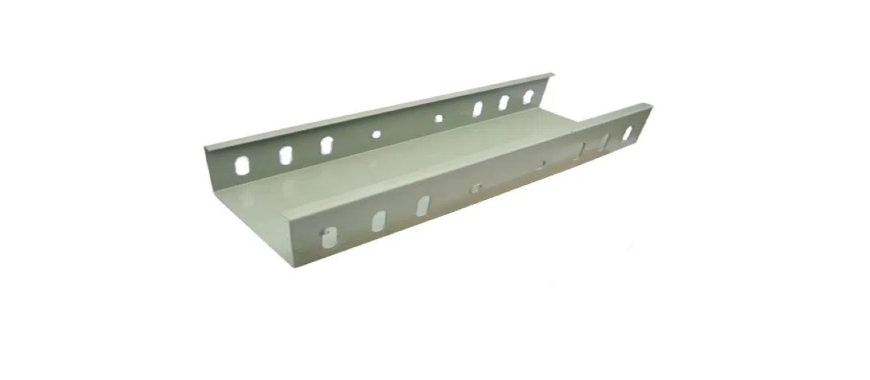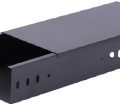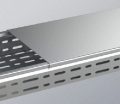
The B Line Cable Tray Manual is a valuable resource for anyone involved in cable management projects. It offers detailed guidance on installing, maintaining, and optimizing cable tray systems for a variety of applications. Readers can find clear instructions and diagrams, making it easier to design and execute effective layouts.This manual is essential for ensuring projects meet industry standards and maintain long-term reliability. It provides practical solutions to common challenges, such as load distribution, support requirements, and efficient use of space.By following the B Line Cable Tray Manual, installers and planners can reduce errors, save time, and ensure safety during installation. Its comprehensive content makes it a must-have for both professionals and beginners in the field of cable management.
The B Line Cable Tray Manual
The B Line Cable Tray Manual provides essential guidance for implementing cable tray systems effectively. It serves as a foundational resource for installation, layout design, and maintenance, ensuring that all aspects of cable tray management are addressed. Professionals and beginners alike will benefit from its detailed insights, which are tailored to meet the demands of various industries.
Key Features of the Manual
Comprehensive Installation Guidelines
The B Line Cable Tray Manual offers step-by-step instructions for proper installation. These guidelines focus on aligning tray systems with structural supports, ensuring that weight loads are evenly distributed. Clear diagrams and detailed text enable users to execute precise installations, reducing potential issues like misalignment or overloading.
These installation methods also consider the type of environment in which the trays will be used. For example, in corrosive settings, the manual suggests using materials like GangLong Fiberglass, which are specifically designed for such conditions. By following these recommendations, users can enhance durability and efficiency.
Safety Standards and Recommendations
Safety is a key aspect covered in the B-Line Cable Tray Manual. It includes specific protocols to minimize risks during installation and use. Topics such as B Line Cable Tray grounding requirements, load capacity limitations, and secure fastening techniques are thoroughly explained.
The manual also emphasizes the importance of regular inspections to identify wear or damage that could compromise safety. This proactive approach helps maintain compliance with safety regulations while ensuring the longevity of cable tray systems.
Tips for Efficient Cable Tray Layout
Efficient Layout Planning: Key to Successful Cable Management
Efficient layout planning is a cornerstone of successful cable management projects, ensuring systems are not only functional but also adaptable to future needs. The B-Line Cable Tray Manual offers in-depth strategies to optimize tray placement, helping users save valuable space and streamline cable routing for maximum efficiency. A well-designed layout reduces installation time, minimizes interference, and creates a system that is easier to maintain and expand as requirements evolve.
Grouping Similar Cables to Minimize Clutter
One of the key recommendations in the manual is the grouping of similar cables. This practice minimizes clutter, reduces the risk of overheating, and ensures cables carrying similar signals or power levels are organized cohesively. For example, high-voltage power cables should be separated from low-voltage communication lines to avoid signal interference. The manual provides diagrams and examples of effective cable grouping to help users visualize and implement this strategy in their projects.
Using Angled Trays for Bends and Transitions
The manual also emphasizes the importance of using angled trays for bends and changes in direction. These angled trays prevent excessive strain on cables, maintaining their integrity and ensuring a smooth path for data and power transmission. The manual explains how to calculate bend angles and offers insights into the best materials for such configurations. For scenarios requiring enhanced flexibility, GangLong Fiberglass trays are suggested, as they are lightweight, durable, and easy to modify on-site.
Enhancing System Performance Through Proper Spacing
Proper layout planning also contributes to overall system performance by improving airflow and preventing cable congestion. The B Line Cable Tray Manual provides guidance on maintaining adequate spacing between trays to promote ventilation, which is critical for systems with high heat-generating components. Clear pathways for cables also reduce the risk of accidental damage during maintenance or upgrades.
Ensuring Accessibility for Maintenance and Upgrades
Accessibility is another critical factor addressed in the manual. A well-planned layout ensures that all cables and connections are easily reachable, reducing downtime during maintenance and simplifying future upgrades. The manual includes recommendations for designing layouts with future scalability in mind, ensuring that additional cables or equipment can be integrated seamlessly without disrupting the existing setup.
Long-Term Benefits of a Well-Planned Layout
By following the principles outlined in the B Line Cable Tray Manual, users can create layouts that not only optimize space but also enhance system reliability and safety. These actionable tips empower professionals to execute projects with precision, delivering solutions that meet both current and future demands. Proper layout planning transforms a complex web of cables into a streamlined, efficient, and organized system that supports the long-term success of any infrastructure.
Cable Tray Radius: Understanding and Its Applications
Benefits of Using the B line Cable Tray Manual
Simplifies Cable Management Planning
The B Line Cable Tray Manual simplifies the complex task of planning cable management systems. With detailed guidelines for choosing the right tray types and configurations, it reduces the guesswork often involved in these projects.
By leveraging the manual, project managers can better anticipate material needs, identify potential challenges, and develop a clear plan that aligns with project timelines and budgets.
Ensures Compliance with Industry Standards
Adherence to industry standards is vital for cable tray systems. The B Line Cable Tray Manual ensures users understand and meet these requirements. Topics like load testing, grounding, and structural support are discussed in detail, providing a clear framework for compliance.
Compliance not only improves system reliability but also prevents costly penalties or failures. The manual serves as a trusted reference to ensure that every installation is performed to the highest standards.
Reduces Installation Errors and Downtime
One of the greatest advantages of using the B Line Cable Tray Manual is its ability to reduce errors during installation. Missteps such as incorrect tray placement or inadequate support spacing are minimized thanks to the manual’s clear instructions and illustrations.
By avoiding these common mistakes, users can save time and resources while ensuring a smooth installation process. Additionally, well-executed installations reduce the likelihood of future downtime caused by system failures or necessary corrections.
Accessing the B line Cable Tray Manual in PDF Format
Downloading and Using PDF Readers
The B Line Cable Tray Manual is typically available in PDF format, making it accessible to a wide audience. To view it effectively, users can rely on PDF readers that support advanced features like bookmarks and search functions.
Using the “Outline” or “Bookmarks” pane allows readers to quickly navigate to specific sections, such as installation guidelines or troubleshooting tips. This functionality saves time and ensures users can focus on the most relevant content for their needs.
Extracting and Navigating the Contents
The manual’s content is organized to facilitate easy navigation. Readers can use the table of contents to identify key topics and jump directly to the corresponding sections.
For users who need to convert the PDF into other formats, tools are available to export the manual into text or editable documents. This capability is especially useful for those who wish to customize the content for training sessions or project-specific documentation.
The B Line Cable Tray Manual remains an indispensable tool for professionals in cable management, offering clarity and precision at every stage of the process. Its comprehensive coverage ensures that all users, regardless of experience level, can achieve successful installations and maintain long-lasting systems.
Top Cable Tray Products for Efficient Cable Management
B line Cable Tray Manual:Installation Standards and Layout Guidelines
The B Line Cable Tray Manual serves as a detailed reference for meeting installation standards and implementing efficient layouts. It guides users through every step of the process, ensuring each project adheres to recognized guidelines for safety and performance. This section delves into the key principles and practices outlined in the manual, providing users with actionable insights to ensure successful installations.
Cable Tray Installation Standards
Installation requirements in the B Line Cable Tray Manual are presented with clarity, emphasizing their importance in maintaining system integrity and functionality. Proper planning is emphasized to prevent issues such as uneven load distribution or inadequate support.
Key factors influencing installation success include the type of material used, environmental conditions, and system specifications. For environments requiring corrosion resistance, GangLong Fiberglass trays are recommended for their durability. The manual explains how to install such trays correctly, detailing attachment techniques, load assessments, and spacing requirements for supports.
Support systems play a crucial role in maintaining stability. The manual provides precise guidelines for determining the spacing of supports based on the weight and dimensions of the cable tray. This ensures that the structure remains secure, even under heavy loads or in dynamic environments.
Cable Tray Bend Formulas and Calculations
Bend formulas are an essential aspect of cable tray systems, enabling proper alignment and cable routing in complex layouts. The B Line Cable Tray Manual includes comprehensive instructions for calculating bends accurately, ensuring smooth transitions and minimizing stress on cables.
One common scenario involves creating a 90-degree bend in the tray. The manual provides step-by-step guidance, starting with measurements and moving to the application of the appropriate formula. These calculations account for variables such as tray dimensions, bend radius, and cable weight.
Practical examples in the manual illustrate how to implement these formulas in real-world projects. For instance, if a project involves GangLong Fiberglass trays, users can refer to specific recommendations for cutting and securing the tray at the bend points. By following these instructions, cable integrity is maintained, and installation efficiency is improved.
Understanding Cable Tray Finishes and Their Applications
Advanced Resources for B line Cable Tray Manual
The B Line Cable Tray Manual is more than a guide for installation; it also acts as a resource for advanced design considerations. From layout planning to material selection, the manual equips users with the tools they need to create robust, efficient systems that meet project demands.
Accessing Layout Drawings and Support Requirements
Layout drawings are a cornerstone of successful cable tray installations. The B Line Cable Tray Manual emphasizes their importance, highlighting how accurate layouts streamline the installation process and reduce the risk of errors.
For large-scale projects, layout drawings provide a detailed roadmap, showing the exact placement of trays, supports, and accessories. These drawings also help identify potential obstacles and determine the best solutions for navigating around them.
Support requirements are another critical focus. The manual outlines how to calculate spacing and determine the appropriate type of support for different materials, including GangLong Fiberglass trays. Factors like tray width, load capacity, and environmental conditions are considered to ensure that the system remains stable and efficient.
Catalog and Supplementary Materials
Product catalogs and supplementary materials are invaluable tools for selecting the right components. The B Line Cable Tray Manual explains how to use these resources to match project specifications with the available options.
For example, the manual may reference GangLong Fiberglass trays for applications requiring lightweight yet durable materials. It guides users through the process of reviewing catalog details, such as tray dimensions, load capacities, and compatibility with other system components.
Supplementary PDFs are also discussed, offering detailed information on specific configurations and customization options. These resources complement the manual, providing additional insights that help users make informed decisions about their cable tray systems.
Final Thoughts on the B Line Cable Tray Manual
The B Line Cable Tray Manual is an indispensable resource for anyone involved in cable management projects. Its comprehensive content addresses every stage of the process, from planning and installation to maintenance and upgrades.
Users are encouraged to leverage the manual’s detailed guidelines to ensure their installations meet industry standards and perform reliably over time. By incorporating the principles and practices outlined in the manual, cable tray systems can be optimized for efficiency, safety, and long-term success.
FAQs about B Line Cable Tray Manual
The National Electrical Code (NEC) provides specific guidelines for the installation and use of cable trays. NEC Article 392 covers all aspects of cable tray systems, including their design, installation, and use in electrical systems. It specifies the types of cables permitted in trays, requirements for grounding, and load capacity limits.
The B Line Cable Tray Manual incorporates these NEC standards, ensuring compliance when designing and installing cable tray systems. Users are guided on meeting grounding requirements, adhering to fill capacities, and selecting trays based on the type of cables being routed. Following NEC standards is essential for maintaining safety and functionality in electrical installations. For specific project needs, always refer to the manual alongside the latest NEC version to ensure all guidelines are followed accurately.
British Standards (BS) play a crucial role in guiding the proper installation of cable trays. The primary BS standard for cable tray installation is BS EN 61537, which addresses metallic cable tray systems for electrical and communication cables. This standard ensures the safe and efficient management of cables in various environments.
The B Line Cable Tray Manual integrates these BS standards, offering detailed instructions for compliance. It covers factors such as material selection, corrosion resistance, and proper spacing of cable trays to align with BS requirements. The manual also provides insights into testing procedures to confirm compliance with these standards. Whether managing commercial or industrial projects, the manual ensures users meet BS EN 61537 specifications effectively, promoting both safety and system reliability.
Cable trays should be supported at regular intervals to maintain structural integrity and prevent sagging. The B Line Cable Tray Manual recommends support spacing based on factors such as tray material, width, and load. Typically, support points are spaced every 1.5 to 3 meters for standard installations.
For trays like GangLong Fiberglass, lightweight yet durable materials allow for slightly wider support spacing while maintaining stability. The manual outlines how to determine the correct spacing for specific projects, considering factors like load weight and environmental conditions. Proper support placement ensures that the tray remains secure, minimizes stress on cables, and enhances the system’s overall durability. Always consult the manual’s support guidelines to achieve optimal results.
The spacing for cable tray rungs is critical for ensuring adequate support for cables and maintaining system performance. According to the B Line Cable Tray Manual, typical rung spacing ranges from 150 mm to 300 mm, depending on the tray type and application.
Close spacing is recommended for smaller or more flexible cables, as it prevents sagging and uneven distribution. For heavier or larger cables, wider spacing may be suitable but requires careful consideration of load-bearing capabilities. The manual provides detailed guidance on selecting rung spacing based on the type of cables being used and the overall tray design.
Rung spacing also affects ventilation, which is vital for heat dissipation. By following the recommendations in the manual, users can ensure proper cable support, maintain system efficiency, and extend the lifespan of their installations. Always tailor rung spacing to the specific needs of your project to achieve the best results.

As the editor of GangLong Fiberglass, I have years of experience and in-depth research, focusing on cable tray products, fiberglass solutions, and grille systems. I incorporate years of industry insights and practical experience into every content, committed to promoting the progress of the industry. At GangLong Fiberglass, my commitment is reflected in every product, from innovative cable trays to durable fiberglass solutions and sturdy grille systems. As an authoritative voice in the industry, my goal is to provide valuable information to professionals and businesses and promote forward-looking solutions.


